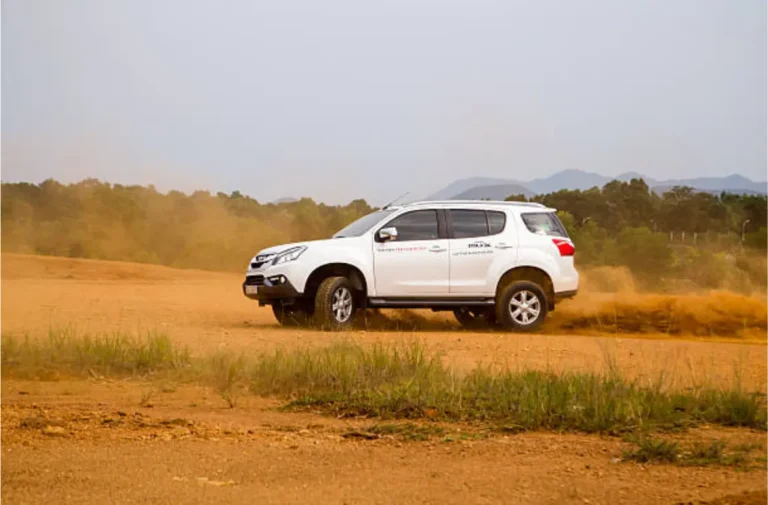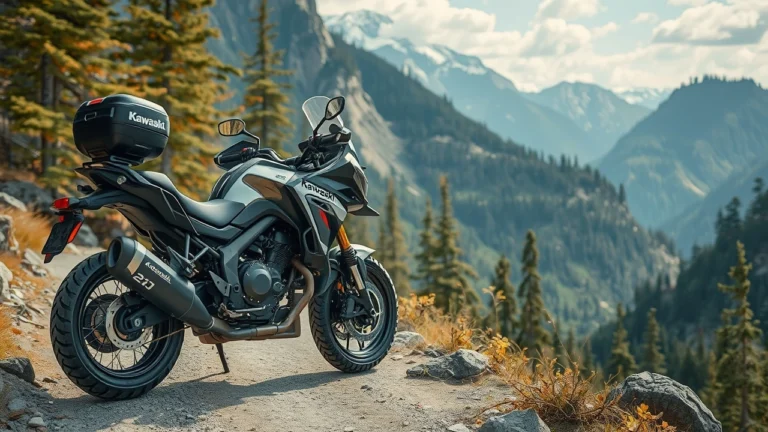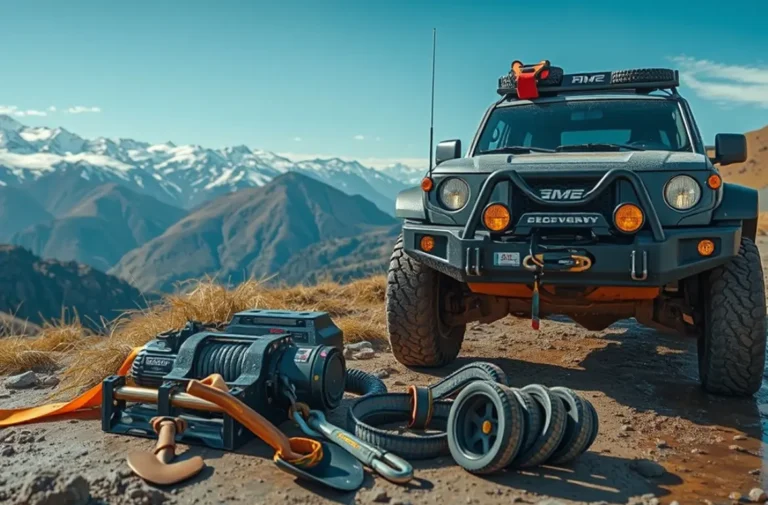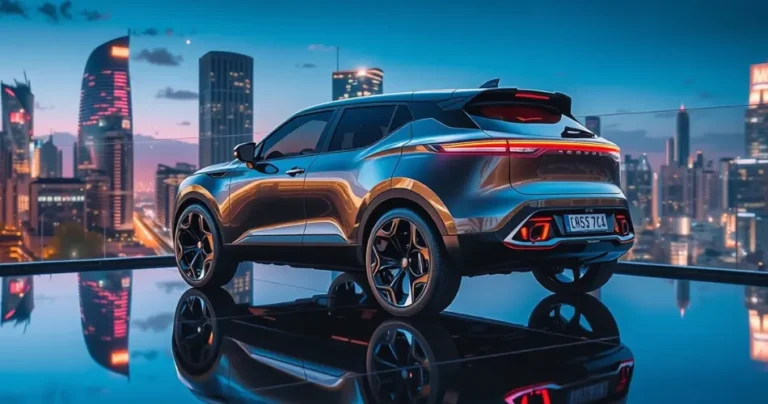What Is a Ford Highboy? A Deep Dive into Classic Ford 4×4 Truck History
Ford Highboy history 101: We dig into F-Series history to give you all the dirt on unofficial Ford truck terminology.
Certain terminology that don’t initially make much sense may come up when you go deeper into the history of Ford 4x4s. The distinctions between various year models, available packages, weight ratings, suspension, and other factors will start to make sense with some clarification, but terms like highboy, dentside, and bumpside confuse the waters of what people are talking about.
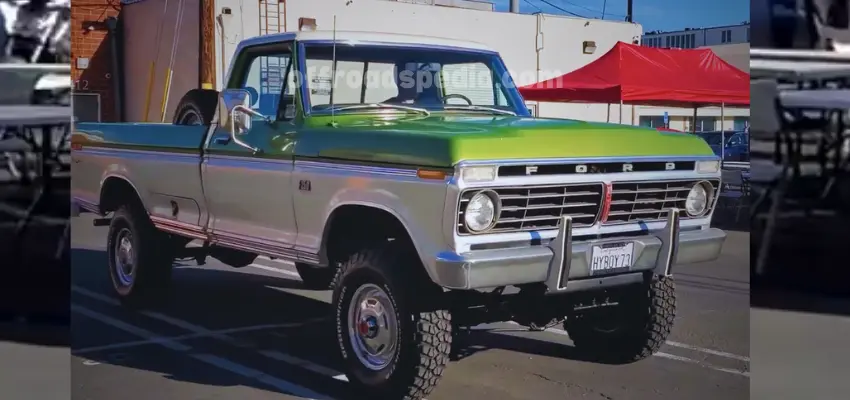
Since 1967–1972 Ford trucks have a real “bump”—a curving protrusion that runs down the side of the truck from the front fender to the end of the bed—these trucks are officially known as bumpsides. A dentside, which is basically the opposite of a bumpside body feature, is a concave “dent” that runs along the side of a 1973–1979 Ford truck.
The meaning of “highboy,” as it relates to the Ford Truck line, is rather more nuanced. The word isn’t only used for Ford trucks; it was first used informally to describe the earliest four-wheel-drive pickups. Aftermarket adaptations of two-wheel-drive vehicles were the first 4x4s.
Typically, these trucks had a split transfer case that required a higher stance. Later, the phrase started to be used to describe 4WD, divorced transfer cases, and pre-1977 ½ Ford F-250 trucks (1967-1977 ½).
This is an NP 205 transfer instance involving a divorced Ford (driver-drop). The jack shaft extends from the rear of the 2WD transmission to the NP 205, which has been detached.
Ford Highboy History: What Is a Divorced Transfer Case?
Although the phrase “divorced transfer case” refers to a transfer case that is not immediately attached to the transmission, it does not entail any litigation or attorneys dividing up family assets.
A 2WD version of the same transmission will have a single rear output, but nearly all transfer cases nowadays are attached straight to a 4WD-specific transmission. A married or mated transmission is the term used to describe a transfer case that is attached to a transmission.
The easiest way to get a 4×4 started was to equip a 2WD truck with a front driveshaft, a front drive axle, a tiny driveshaft, and a separated transfer case. Naturally, carrying all this additional equipment took far more room, so the cars were significantly higher than their 2WD counterparts. The term “highboy” is thought to have originated from this.
Ford Highboy History: Trick Question
Although Harry Wagner, our friend and frequent freelance writer, photographer, and contributor, has a 1977 Ford F-150 that is well-known in Four Wheeler, it is not a highboy unless you belong to the group that uses the phrase to refer to 4×4 F-150s. Although it has a lot of modifications that make it seem like a highboy, it is not a highboy according to our definition.
We frequently receive the same query: “Hey Four Wheeler, I have a 1978 (or 1979) Ford F-250 4×4. Is that a highboy or not? The short answer is no.
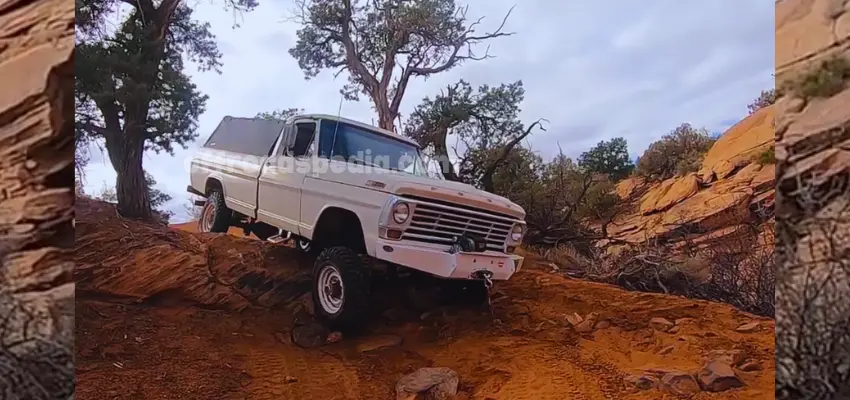
Since the Ford F-250 4x4s manufactured in late 1977, 1978, and 1979 are clearly distinct from the F-Series trucks manufactured after 1980 and are more like to the pre-1977 ½ F-250 4x4s in many respects, we can understand the mistake. However, the trucks manufactured starting in late 1977 are not highboys. In comparison to true highboys, they have broader frames, married transfer cases, and a lower stance (until raised with aftermarket items, anyway).
The basis of the myth is that some people assumed a highboy had a factory suspension lift because the vehicles had identical bodywork but distinct postures. Although such vehicles did ride higher, the difference in height indicates a year-model change rather than a suspension option from the factory.
Therefore, “Highboy” refers only to the taller stance that was retained from the mechanical design that changed in 1977 ½, not to a unique suspension package.
Other Ford Highboy Factoids
- The closed-knuckle Dana 44 front axle with drum brakes and the highboy-specific front crossmember are clear indicators that this is a genuine highboy.
- Although some people call them highboys, 4×4 F-150s and F-100s are not. In our opinion, a truck with five-lug axles isn’t a highboy; only 4×4 F-250s are eligible.
- The parts department at your neighborhood Ford dealership is unlikely to understand what you mean if you ask for parts for a highboy—it’s an unofficial designation—unless they are extremely knowledgeable.
- Due to the shorter frame of Ford highboys compared to the later non-highboy vehicles, a bed made in late 1977, 1978, or 1979 will not fit on a frame made before 1977 ½ unless additional mounting holes are drilled.
- The FE engines were removed from production in early 1977, and the 351M and 400 took their place. After 1977 ½, such engines continued to be used in non-highboy vehicles.
- Prior to 1977, the majority of highboys would have either the old 300 I-6 or the 360 FE V-8. The factory only offered the 460 and 390 engines in 2WD trucks.
- Early in 1977, disc brakes and open knuckles were also added, and these features were continued in non-highboy trucks manufactured after 1977 ½.
- You can get an early 1977 “unicorn” highboy with an open knuckle axle, disc brakes, and a FE engine. However, that truck was only on the market for six months.
- A highboy’s framerails cannot accommodate gas tanks that are not highboys. Carrying jerry cans, using a bespoke tank, installing a secondary tank, or, as our buddy, highboy enthusiast Mike Tarvin, has informed us, retrofitting a Scout or Bronco II gas tank are your only options if you want a larger tank (for more fuel and hence more range).
Is a Ford Highboy a Ranger?
Another trick is Tim Jackson’s 1973 F-250, which was designed for overlanding, or car camping. It’s not quite a highboy, but it’s a 4×4. Mounted on a 1976 highboy chassis, the body is from a 1973 2WD F-250. One of the trim levels that Ford offered for both highboy and non-highboy trucks is the Ranger. Base Custom, Sport Custom, Custom, Ranger, and Ranger XLT were further trim options.
Alongside the ordinary cab and the crew cab design, which was initially launched in 1966, there was also a SuperCab (what most people would call an extra cab), which was added in 1974. To put it briefly, a truck with Ranger trim does not always have a highboy designation, but a highboy can be a Ranger.
What’s the Difference Between a Highboy and a Lowboy?
Redferd, our 1978 Ford F-250 4×4, is shown here. It’s not a highboy, but it’s a lowboy. What is meant by “lowboy”? The post-1977 ½ F-250s with a married transfer case and a lower stance from the factory have also been referred to by this unofficial designation.
In terms of model year, the two unofficial classifications for the pre-1977 and post-1977 ½ trucks do not overlap, and highboys are notably taller from the factory. Ford corporate won’t understand the meaning of the unofficial moniker “lowboy,” which is also used by devotees.
Did They Ever Make a Crew Cab F-250?
Yes, to put it succinctly. There exist both dentside and bumpside crew cab Ford F-250s, albeit they are rare and many have been lost to the effects of time. The reasons why many people, including ourselves, would adore owning a crew cab F-250 4×4 highboy should be clear. It would make a nice starting point for a restomod overlander, a tow rig, or a daily driver with room for loved ones.

Beginning with the 1974 model year, highboy SuperCabs were also offered. With a sizable area behind the front seats and additional side windows but no additional doors, this is an extended cab design.
What Engines Came in These Ford Trucks?
From the factory, highboys were equipped with the 240 I-6, 300 I-6, or FE V-8 360ci (and maybe the 352 for 1967 highboys). After 1977, the 400ci and 351M V-8s were put into service. Ford’s 300 I-6 is known for its dependability and produces 260 lb-ft of torque, which is good for an older full-size truck.
It was also utilized in Ford dump trucks. For the older vehicles, the 360 FE’s engine produced 215 horsepower and 375 lb-ft; after 1972, it produced 196 horsepower and 327 lb-ft. For that half-year of highboy manufacturing in 1977, the FE engine line was discontinued in favor of the 351M and 400ci.
Highboy Axles
Although a closed-knuckle, low-pinion Dana 60 was a possibility, the majority of highboys have a low-pinion, closed-knuckle Dana 44 front axle. The early 1977 4×4 F-250 highboy would have been equipped with disc brakes and a Dana 44 axle with an open knuckle and low pinion.
The company would have supplied full-float Dana 60 rear axles in either 16- or 30-spline varieties. The factory would have installed 4.10:1 gearing on all highboy axles. Transfer cases for highboys would have been Dana 24, NP205, or possibly NP203.
Why Are Highboys Cool?
The elevated original suspension of a highboy enables wider tires to suit these trucks without modification, in addition to its historical significance and appeal to Ford truck enthusiasts. In addition, the available engines, transmissions, and transfer case, along with their sturdy ¾-ton axles, provide a strong base for any severely utilized off-road vehicle.
For more Information about Offroad vehicles :
FAQs About What Is a Ford Highboy ?
In The End
The Ford Highboy is more than just a tough old truck—it’s a piece of American history. Built between 1967 and mid-1977, these F-250 4x4s stood taller, worked harder, and left a mark on truck culture that still holds strong today. With their high stance, divorced transfer cases, and solid axles, Highboys were made for real work and rough roads. Whether you’re restoring one or just a fan of classic trucks, knowing what makes a true Highboy helps you appreciate its legacy and why it remains a favorite among Ford enthusiasts.

